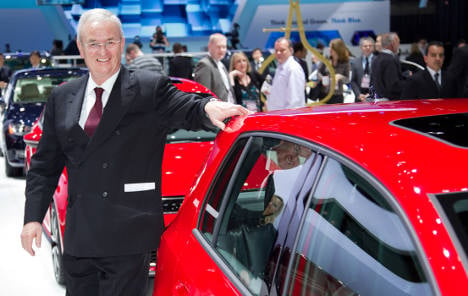The top executives of Germany’s 30 biggest companies profited handsomely from large profits margins last year, new figures revealed. Several DAX companies took record winnings in 2011, meaning their bosses earned an average wage of €6.1 million in 2011, according to figures published by consultancy Towers Watson.
By far the highest earner was Martin Winterkorn, head of carmaker Volkswagen, who got a tidy €17.4 million for last year’s sterling efforts. And it was a hefty wad more than the €11.1 million he carted off in 2010.
But then, some would argue that he deserved it, seeing as he steered the company to its biggest ever profit margin: €15.8 billion, double what Volkswagen made the year before.
A distant second to Winterkorn was Peter Löscher, CEO of technology giant Siemens. He earned €9.8 million in 2011, a paltry mound compared to Winterkorn’s mountain. In fact, Löscher’s pile was €300,000 smaller than in 2010.
According to Towers Watson, companies are now more likely to reward long-term success when it comes to organizing their bonus structure. More than 40 percent of bonuses reward performance over a period of between two and nine years.
“Even yearly bonuses are often no longer tied to the success of a business year, but to the results from previous or future years,” Olaf Lang of Towers Watson told Der Spiegel. “The border between short-term and long-term bonuses is blurring.”
Often, one portion of an executive’s bonus is delayed by one or two years, and lowered if targets are not reached. This was a positive development, the consultancy argued, because it means that managers are rewarded “for leading the company by a strategy geared to long-term success.”
The Local/bk



 Please whitelist us to continue reading.
Please whitelist us to continue reading.
Member comments